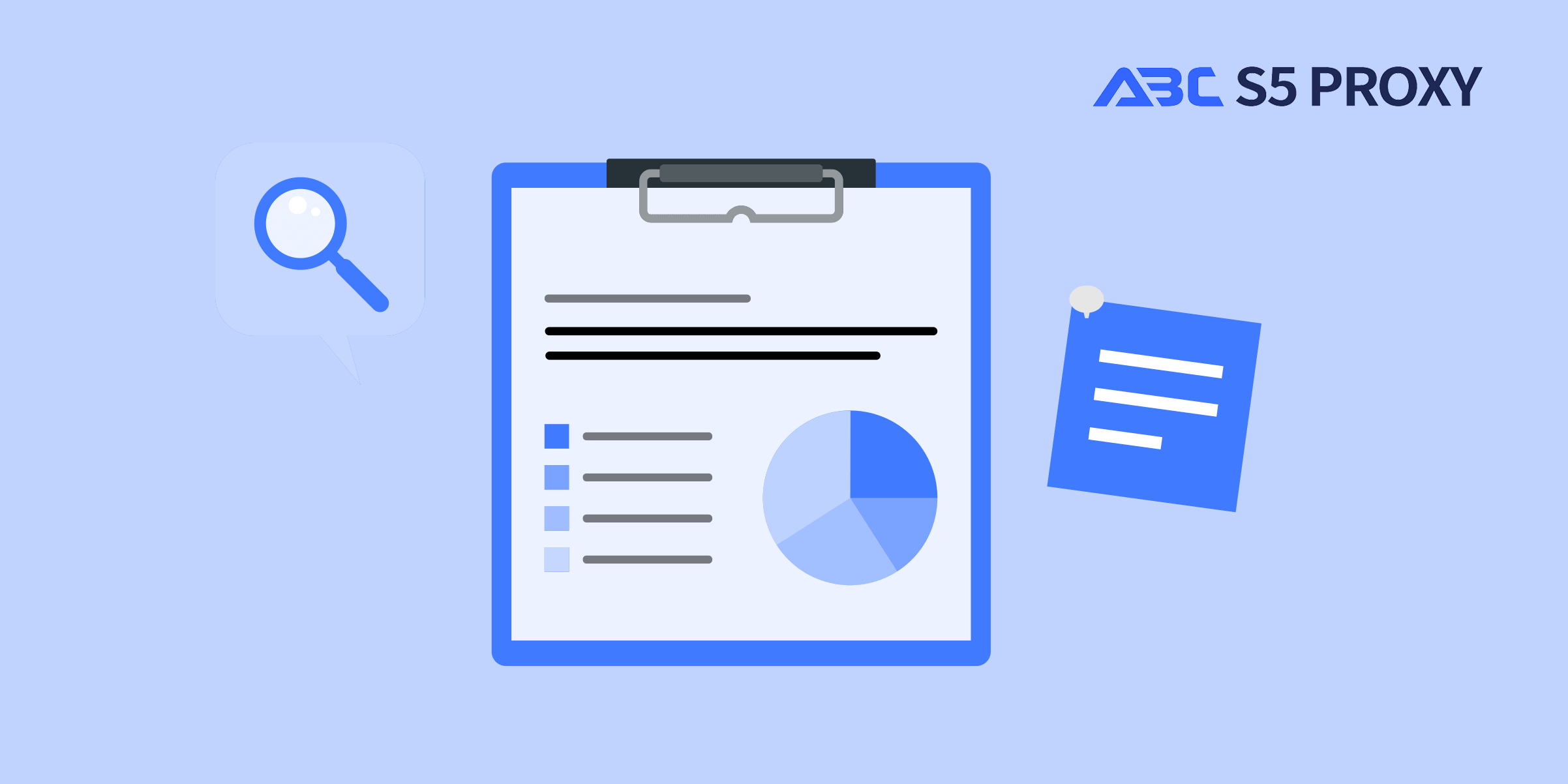Residential Proxies
Allowlisted 200M+ IPs from real ISP. Managed/obtained proxies via dashboard.

Proxies
Residential Proxies
Allowlisted 200M+ IPs from real ISP. Managed/obtained proxies via dashboard.
Residential (Socks5) Proxies
Over 200 million real IPs in 190+ locations,
Unlimited Residential Proxies
Use stable, fast, and furious 700K+ datacenter IPs worldwide.
Static Residential proxies
Long-lasting dedicated proxy, non-rotating residential proxy
Dedicated Datacenter Proxies
Use stable, fast, and furious 700K+ datacenter IPs worldwide.

Web Unblocker
View content as a real user with the help of ABC proxy's dynamic fingerprinting technology.
Proxies
API
Proxy list is generated through an API link and applied to compatible programs after whitelist IP authorization
User+Pass Auth
Create credential freely and use rotating proxies on any device or software without allowlisting IP
Proxy Manager
Manage all proxies using APM interface

Proxies
Residential Proxies
Allowlisted 200M+ IPs from real ISP. Managed/obtained proxies via dashboard.
Starts from
$0.77/ GB
Residential (Socks5) Proxies
Over 200 million real IPs in 190+ locations,
Starts from
$0.045/ IP
Unlimited Residential Proxies
Use stable, fast, and furious 700K+ datacenter IPs worldwide.
Starts from
$79/ Day
Rotating ISP Proxies
ABCProxy's Rotating ISP Proxies guarantee long session time.
Starts from
$0.77/ GB
Static Residential proxies
Long-lasting dedicated proxy, non-rotating residential proxy
Starts from
$5/MONTH
Dedicated Datacenter Proxies
Use stable, fast, and furious 700K+ datacenter IPs worldwide.
Starts from
$4.5/MONTH
Knowledge Base
English
繁體中文
Русский
Indonesia
Português
Español
بالعربية

Crawling a website is an essential aspect of SEO, allowing search engines to index the content and make it discoverable to users. However, the process can sometimes lead to getting blocked by the website due to excessive requests or improper techniques. In this blog post, we will discuss effective strategies on how to crawl a website without facing the risk of being blocked.
Before diving into the strategies, it's crucial to understand the basics of crawling and why websites may block crawlers. Crawling refers to the automated process of fetching web pages and indexing them. Websites may block crawlers for various reasons, such as protecting their data, ensuring fair usage of resources, or preventing malicious activities.
One of the fundamental ways to crawl a website responsibly is by adhering to the guidelines set in the website's robots.txt file. This file tells search engine crawlers which pages or sections of the site should not be crawled. By respecting these directives, you can avoid accessing restricted areas and minimize the risk of being blocked.
Another important strategy to prevent getting blocked while crawling a website is to set crawl rate limits. Crawlers often have the option to adjust the speed at which they access a site. By slowing down the crawl rate, you reduce the load on the website's server and demonstrate that you are a responsible crawler.
When crawling a website, it's essential to identify yourself properly using user agents. User agents are identifiers that inform the website about the source of the incoming request. Make sure to use a user agent that clearly indicates your intent as a legitimate crawler and includes contact information in case the website owner needs to reach out.
To avoid triggering potential blocking mechanisms, consider implementing IP rotation while crawling a website. By rotating your IP address periodically, you can avoid being flagged for sending too many requests from a single IP. This technique can help distribute the crawling workload and reduce the chances of being blocked.
While crawling a website, always follow ethical practices that align with the website owner's expectations. Avoid overloading the server with excessive requests, respect any crawl-delay instructions, and ensure that your crawling activities do not interfere with the normal functioning of the site.
Keep a close eye on crawl analytics to track your crawling activities and identify any potential issues. Monitoring metrics such as crawl errors, response codes, and crawl frequency can help you optimize your crawling process and address any issues promptly.
Crawling a website without getting blocked requires a combination of technical knowledge, ethical practices, and proactive monitoring. By respecting robots.txt directives, setting crawl rate limits, using appropriate user agents, implementing IP rotation, and following ethical crawling practices, you can efficiently crawl websites while minimizing the risk of being blocked. Remember, responsible crawling benefits both search engines and website owners, leading to better indexing and improved discoverability of online content.
Featured Posts
Popular Products
Residential Proxies
Allowlisted 200M+ IPs from real ISP. Managed/obtained proxies via dashboard.
Residential (Socks5) Proxies
Over 200 million real IPs in 190+ locations,
Unlimited Residential Proxies
Use stable, fast, and furious 700K+ datacenter IPs worldwide.
Rotating ISP Proxies
ABCProxy's Rotating ISP Proxies guarantee long session time.
Residential (Socks5) Proxies
Long-lasting dedicated proxy, non-rotating residential proxy
Dedicated Datacenter Proxies
Use stable, fast, and furious 700K+ datacenter IPs worldwide.
Web Unblocker
View content as a real user with the help of ABC proxy's dynamic fingerprinting technology.
Related articles

How do porn proxies affect online privacy and security
This paper discusses the technical principles and potential impacts of porn proxy, analyzes how proxy IP balances privacy needs and network security, and introduces the role of abcproxy in related scenarios.